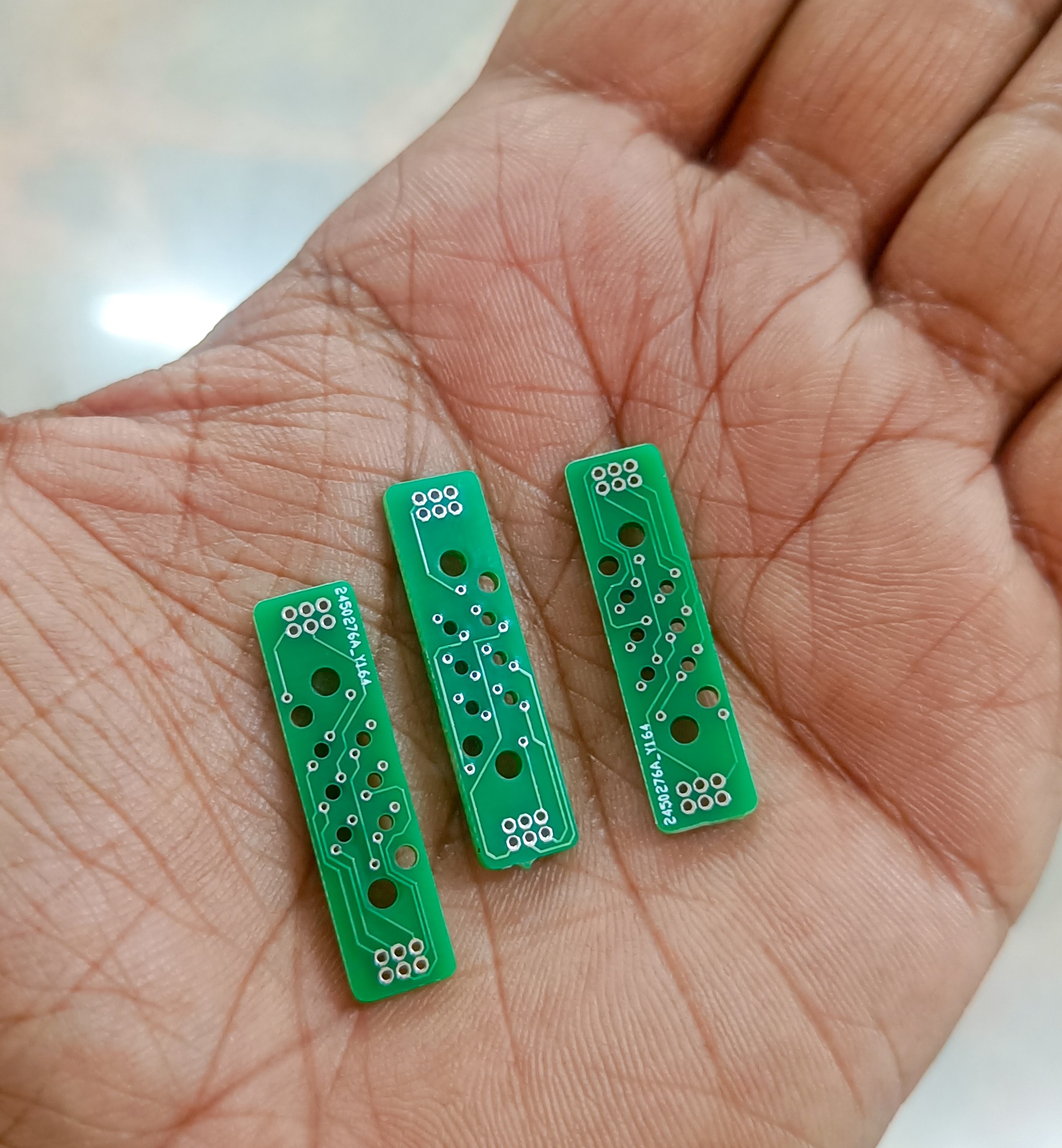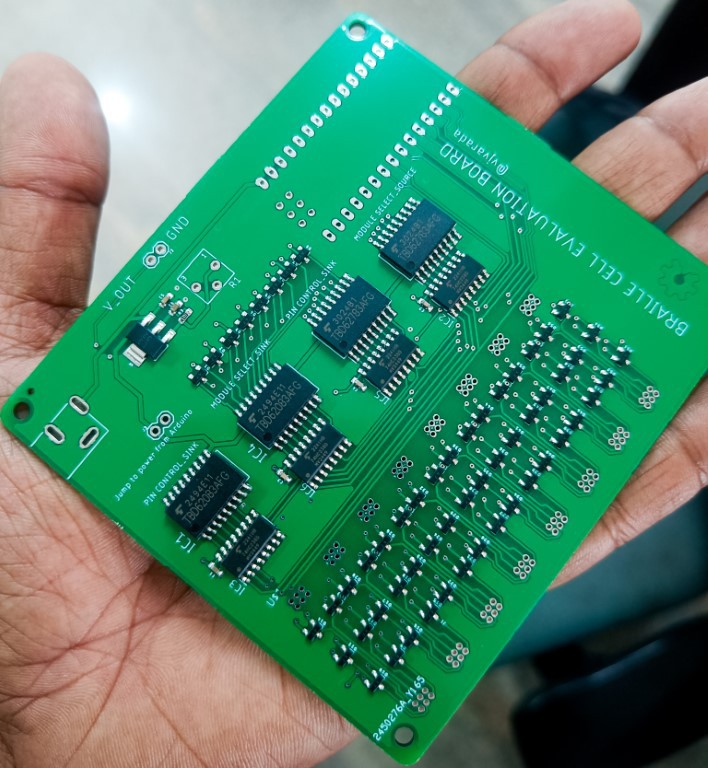
Fig 1: Individual Braille Cell PCB's
I had to max out the PCB fabs capability and took a few risks in the design by overriding my tried and tested DRC(Design Rule Check) file in Eagle when it came to the distance of the traces to the edge of the board, drills, and pads, but it seems to have worked. Nothing is shorted, or disconnected, so big win!
These boards you see in the image above make up one braille-cell model each. You get a good sense of the tiny scale of this, and I'm starting to realize the nightmare this is going to be to solder!

Fig 2: Braille Cell Evaluation Board
I could have gone the simple route and created a driver board for a single braille cell by using 6 H-bridges and 12 MCU pins to test out just a single braille cell function, but I thought I'd stretch myself and figure out how to create a driver board to drive N-number of braille cells that future me can use to create a full braille display consisting of many braille cells, as well as reference schematics for other people to integrate these braille modules into other accessibility products and projects. Let's hope the research and reverse engineering of Flip-Dot Displays work out.
If it does, it means that not only can the individual braille cells be made affordable, but the drive circuitry is incredibly affordable as well.
The basic BOM to create the driver part 8-cell braille display for costing purposes is given below. For every additional 8 cells to be added, another pair of Source and Sink drivers and a pair of 74HC238 decoder ICs are needed, in addition to the flyback diodes for each pin. The costs below are considered for an MOQ for 5 boards, and can possibly come down with volume.
| Component | Quantity | Unit Cost $ | Total $ |
| LM317 Adjustable Voltage Regulator | 1 | 0.037 | 0.037 |
| BAV99 Dual Diode IC | 56 | 0.0145 | 0.812 |
| TBD62083AFG | 2 | 0.9450 | 1.89 |
| TBD62783AFG | 2 | 0.9761 | 1.95 |
| Misc. Resistors & Capacitors | 6 | 0.0022 | 0.0132 |
| PCB Fab | 1 | 0.4 | 0.04 |
| PCB Assembly | 1 | 5.9 | 5.9 |
| TOTAL | 11.05 |
11$ for the driver board itself is an amazing cost even at low volume, and I'm really excited about the possibility of creating low-cost refreshable braille computers or integrating braille modules into ATMs, signages, public displays, etc. in the future.
Download the Braille Module Gerber Files here
Download the Braille Cell Evaluation Driver Board Gerber, BOM & Centroid here
 Vijay
Vijay
Discussions
Become a Hackaday.io Member
Create an account to leave a comment. Already have an account? Log In.
When I hear ATMs, I'm thinking that it needs to be engineered to be "vandal resistant", just like the vandal resistant metal keypads they use.
Are you sure? yes | no